BMW I4 Vs Tesla Model 3: Which EV is Right for You?


The BMW i4 vs Tesla Model 3. Two of the most direct competitors in the EV segment today.
Each model offers little less than the very latest in electrified tech and upscale design to win over the dollars of shoppers who are increasingly interested in making the switch to electric.
The popular Tesla Model 3 has been around since 2017. The BMW i4 is a new-for-2023 model that recently made its debut. The Model 3 is Tesla’s entry model, and the i4 is the most affordable all-electric in BMW’s current lineup.
Though these two machines target similar shoppers and preferences, they do so in different ways. Below, we put the BMW i4 vs Tesla Model 3 side by side to compare their key features and capabilities. The goal, to discover where these machines are the closest and the furthest apart.
Cabin Space

BMW i4: The BMW i4’s headroom measures in at 38.2 inches up front, and 36.6 inches in the rear. Where legroom is concerned, it’s 41.5 inches in the front and 34.2 inches in the back. Wider occupants will find 55.2 inches of front shoulder room, and 54.3 inches of rear shoulder room.

Tesla Model 3: The Model 3 offers up 40.3 inches of front headroom and 37.7 inches of rear headroom. Legroom measures in at 42.7 inches up front and 35.2 inches in the rear. Front shoulder room for the Model 3 is 56.3 inches, while rear shoulder room measures 54 inches.
Bottom Line: Rear shoulder room is a near-tie between the pair. The Tesla Model 3’s remaining key interior measurements show an advantage of an inch or more versus the BMW i4. That makes it the ideal choice for taller or leggier occupants, or shoppers concerned with maximum space for their dollar.
Still, the BMW i4’s interior should hit the mark for an enthusiast driver. It’s a car that feels snugger and sportier around them.
BMW i4 vs Tesla Model 3: Powertrains

BMW i4: BMW’s entry i4 model is the eDrive40. It comes with 335 horsepower and a single-motor, rear-wheel drive configuration. The i4 is also offered in a higher-performing M50 variant. That’s good for 536 horsepower with an additional motor and AWD. Regardless of model, the i4’s battery capacity is rated at 83.9 kWh.

Tesla Model 3: The Tesla Model 3 is on offer in Standard Range Plus, Long Range, and Performance designations. The Standard Range Plus model uses a single-motor, rear-drive configuration with a 54 kWh battery and 306 horsepower. Long Range and Performance models run an 82-kWh battery and dual motors for AWD grip. The Model 3 Long Range makes 346 horsepower, while the Performance cranks output to 450 ponies.
Bottom Line: The BMW i4 offers the highest available horsepower of the pair. But the Tesla Model 3 counters with a higher variety of models and configurations available with AWD.
Range and Efficiency

BMW i4: The BMW i4 eDrive 40 can go the furthest on a charge, with about 300 miles of range. With rear-wheel drive, this i4 model only has one electric motor drawing from its battery. The higher-performing, AWD-equipped i4 M50 provides faster acceleration and improved traction. But with two electric motors to feed, full-charge range drops 270 miles.
SEE ALSO: 2022 BMW i4 Review: 4 Series 4 The FutureThe eDrive40 is the most efficient i4 model, with 104 MPGe city and 108 MPGe on the highway.

Tesla Model 3: The Model 3 Standard Range Plus has a range of 263 miles. As the name suggests, the Long Range bumps the figure to 353 miles. Opt for the Model 3 Performance for added power and a 315-mile driving range.
On efficiency, the Standard Range Plus gets 138 MPGe in the city, and 126 on the highway. The Long Range gets 134 MPGe in the city, and 126 on the highway. The Model 3 Performance gets 118 MPGe in the city, and 107 in highway driving.
Bottom Line: Both the i4 and Model 3 offer drivers plenty of range for daily commuting and road trips. The Model 3 though offers the most maximum available range of the pair. Both Long Range and Performance models best the range of comparable i4s by dozens of miles.
If you’ll do a lot of longer-distance driving or driving in cold climates, the added range of the Model 3 is compelling.
Cargo and Towing

BMW i4: The BMW i4’s cargo area measures in with 10 cubic feet of space behind the rear seats. It’s expandable to 45.6 cubic feet with the seats folded down. Though a retractable towing hitch is available in some markets to enable up to 3,500 pounds of towing, it’s unclear whether or not this is available for the North American market. Other sources suggest that towing is not recommended for this vehicle.

Tesla Model 3: The Model 3 can haul 19.8 cubic feet of gear behind the rear seats. With rear seating folded flat, cargo capacity expands to 43 cubic feet. There’s additional storage in the frunk up front, which adds another 3.1 cubic feet of storage.
In some markets, the Tesla Model 3 is offered with a towing hitch and capacity of 2,000 lbs. No towing rating is listed in the US owner’s manual though.
Bottom Line: Both the Tesla Model 3 and BMW i4 serve up spacious cargo areas that capitalize on their EV body structures and styling. The Tesla offers more cargo space with the rear seats up, while the BMW’s seats-flat cargo capacity takes a slight lead. Still, the Tesla’s frunk adds a handy and versatile touch and an advantage in this pair—since the BMW i4 doesn’t offer one.
BMW i4 vs Tesla Model 3: Safety
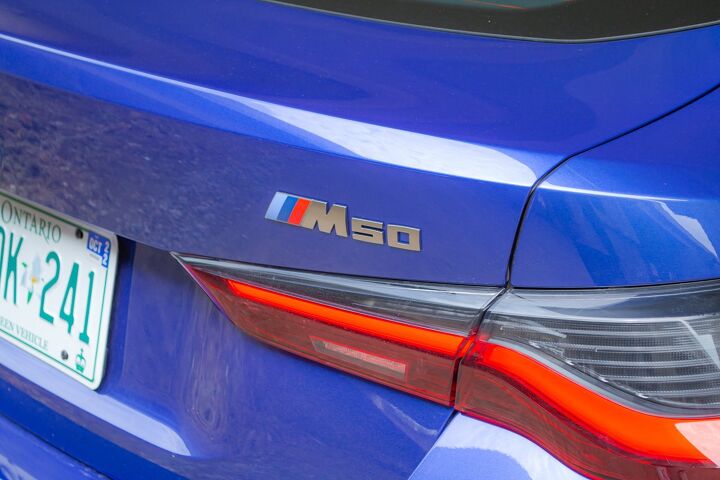
BMW i4: The BMW i4 comes with a range of the market’s latest and greatest in driver assistance tech and safety systems. Cameras and ultrasonic radar power dozens of assist functions which can be improved or enhanced over time with software upgrades.
Numerous features are included to help drivers more easily control their vehicle in a wide range of situations. This includes the Driving Assistant Professional system which adds emergency stop support, pedestrian detection and active side collision protection.
At this writing, the BMW i4 has not been crash tested by the IIHS or NHTSA.

Tesla Model 3: The Tesla Model 3 has earned a reputation as one of the safest cars on the road today. This is thanks in no small part to achieving some of the highest testing scores in the industry.
Top marks from both the IIHS and NHTSA reference the Model 3’s high performing body structure and airbag design, as well as effective hazard detection and collision mitigation tech. In fact, the Model 3’s camera-based safety system can see 360 degrees around the vehicle. It processes visuals at up to 250 meters away.
Bottom Line: Both the BMW i4 and Tesla Model 3 are standard or available with some of the highest-performing safety systems on the road. Crash test data is not available for the BMW i4. It is available for the Model 3 though, where it positions this machine as one of the safest cars on the market today.
Tech and Features

BMW i4: The i4 uses BMW’s latest iDrive 8 system. It’s a next-generation arrangement of displays, graphics and interfaces. The design works as an intelligent partner for the driver in a variety of situations. A curved forward display and enhanced organic dialogue recognition add further appeal for tech lovers. Connected charging, parking and navigation apps are included.
The i4’s driving experience is highly reactive and customizable, thanks to flexible displays and the ability to personalize the car using on-board menus or a smartphone app.
The M50 version has several performance-enhancing technologies. This includes a Variable Sport Steering system and the Adaptive M Suspension for a precisely-controlled ride and handling balance.

Tesla Model 3: On-screen gaming, a built-in surveillance security camera, traffic light and stop sign control, wireless charging and multi-device Bluetooth. These are among the Tesla Model 3’s most in-demand features. A giant central touch-screen with powerful graphics processor allows drivers to monitor and manipulate a wide range of functions from a single screen.
SEE ALSO: Ford Mustang Mach-E vs Tesla Model Y ComparisonAuto Park and Summon features allow drivers to park or retrieve their vehicle with a button press. The all-glass roof gives the cabin an open and airy feel, too.
Bottom Line: Shoppers after the latest in tech, gadgets and connected-car features won’t be left out in the cold by either model. The BMW i4 is packed with innovative and high-end features that are useful and clever. The Model 3’s well-honed and approachable tech package is easy for new drivers to learn and connect with, while making previous Tesla owners feel right at home.
Styling

BMW i4: The i4’s looks smack of compact, high-performing BMW sedans. But it still delivers a uniquely electric character. The distinctive BMW EV grille treatment instantly identifies the i4 on the road,. Dynamic headlights with LED light pipes deliver a strong after-dark presence. Don’t miss the animated exterior lighting and interior interfaces on approach after dark, thanks to the i4’s latest Comfort Access system.
The i4’s shape combines blocky proportions, decorative accents and flowing lines for a look that’s elegant and strong. It’s instantly BMW from a glance, though also something new and exciting. Styling upgrades exclusive to the M50 model dial in an even more aggressive flair.

Tesla Model 3: The Tesla Model 3’s signature shape and smooth design manages a look that’s distinctively upscale but not cluttered and busy. In a subtle color, even the hot-rod Model 3 Performance can slip by relatively discreetly, under the radar. Styling elements convey brand identity from a glance. The clean lines and curvaceous roof signal a sense of space and openness within.
In typical Tesla fashion, the cabin is minimal, upscale, and very tidy. It allows drivers to focus on the scenery, not the tech.
Bottom Line: Styling aficionados have a lot to digest here. If you’re shopping on style alone, you’ve got two good choices—depending on your tastes. The BMW i4 is a striking new take on a familiar shape that engages the eyes with more dramatic wheels, lines and lighting. Fans of a more conventional fascia may gravitate towards the sleeker-looking Model 3.
Pricing

BMW i4: The BMW i4 eDrive40 opens the bidding at $55,900, while the higher-performing i4 M50 comes in from $67,300. Standard features include a 205-watt stereo system, Apple CarPlay, Android Auto, rain-sensing wipers, automatic multi-zone climate control, power seats, keyless access, and more.
After deciding on a model, shoppers can consider a wide range of looks, colors, wheels, upholsteries, trims and optional equipment packages for total customization to their exact tastes.

Tesla Model 3: The Model 3 Standard Range Plus starts at $46,990, with the Long Range AWD climbing to $55,990 and the Performance coming in from $62,990.
Look for a premium stereo system, a 15-inch touch-screen display, heated and ventilated front seats, power tilt steering, adaptive cruise control, an air filtration system, mobile hotspot, and more.
Bottom Line: The Model 3 offers the lowest entry price-point of the pair thanks to its Standard Range Plus model, while the Long Range AWD and i4 eDrive40 are tied at $55,990 apiece.
The highest-performing i4 variant packs 536 horsepower, besting the comparable Model 3 performance by 86 ponies in exchange for its higher price-point.
Dollar for dollar, these electrics represent some of the most compelling EV tech on the scene today. They’re opening the wallets of many shoppers today, while getting many others excited for what’s to come next.
BMW i4 vs Tesla Model 3: In Conclusion

The BMW i4 and Tesla Model 3 are helping pioneer the rapidly-expanding luxury EV segment. Joining them will be additional all-electric models from each automaker in the coming months and years as competition intensifies.
Shoppers should find both models to turn in a solid return on their investment where style, performance, capability and tech are concerned. Long-time BMW owners will find the i4 a remarkable new take on a BMW performance sedan, with many features, functions and interfaces that’ll make them feel right at home.
Those after the ultimate all-electric experience where performance and efficiency are concerned may lean towards the Model 3 for its superior range, power output, energy efficiency and interior volume.
Both models are machines of few weaknesses and many strengths, and both represent some great ways to spend your dollars on an electric luxury sedan in 2022.
Become an AutoGuide insider. Get the latest from the automotive world first by subscribing to our newsletter here.

Justin Pritchard, an award-winning automotive journalist based in Sudbury, Ontario, is known for his comprehensive automotive reviews and discoveries. As a presenter, photographer, videographer, and technical writer, Justin shares his insights weekly through various Canadian television programs, print, and online publications. In 2023, Justin celebrated a significant milestone, airing the 600th episode of his TV program, AutoPilot. Currently, he contributes to autoTRADER.ca, Sharp Magazine, and MoneySense Magazine. His work as a technical writer, videographer, presenter, and producer has been recognized with numerous awards, including the 2019 AJAC Video Journalism Award and the 2018 AJAC Journalist of the Year. Justin holds a Bachelor of Commerce (Hons) from Laurentian University, which he earned in 2005. His career in automotive journalism began that same year at Auto123.com. Since then, he has written one of the largest collections of used car buyer guides on the internet. His passion for photography, nurtured from a young age, is evident in his work, capturing the scenic beauty of Northern Ontario. Living in a region with a particularly harsh winter climate has made Justin an expert on winter driving, winter tires, and extreme-weather safety. Justin’s significant achievements include: 2019 AJAC Video Journalism Award (Winner) 2019 AJAC Road Safety Journalism Award (Runner-Up) 2019 AJAC Automotive Writing (vehicle review topics) (Winner) 2019 AJAC Automotive Writing (technical topics) (Winner) 2018 AJAC Journalist of the Year You can follow Justin’s work on Instagram @mr2pritch and YouTube @JustinPritchard.
More by Justin Pritchard















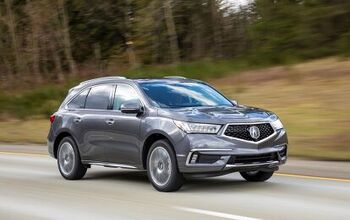
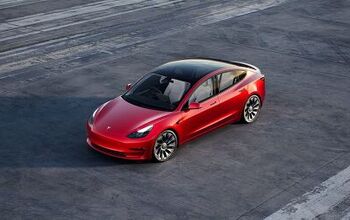






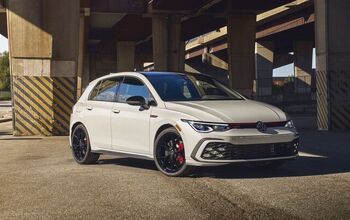



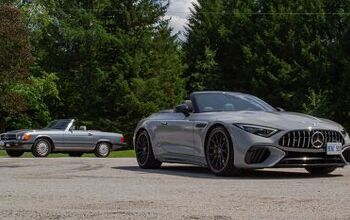



Comments
Join the conversation